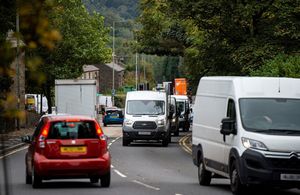E3 statement to the IAEA Board of Governors on the Joint Comprehensive Plan of Action, November 2022
Chair,
On behalf of France, Germany and the United Kingdom, I thank Director General Grossi for his latest report contained in GOV/2022/62, and Deputy Director General Aparo for his Technical Briefing. Once again, we commend the Agency for carrying out its mandate conferred by the United Nations Security Council – even given Iranian non-adherence with its commitments under the Joint Comprehensive Plan of Action.
The E3 thank the Agency for its objective reporting of Iran’s activities with regards to these commitments and encourage the Director General to keep the Board informed regarding the Iranian nuclear programme in all its aspects. We would welcome the Agency’s last quarterly report on monitoring and verification in Iran to be made public.
The Director General very clearly reports that Iran is moving further and further away from its commitments agreed upon in 2015.
- Today, Iran’s total enriched uranium stockpile exceeds JCPoA limits by 18 times and comprises very concerning amounts of uranium enriched up to 5, 20 and 60 percent.
- Since the Director General`s last report as of September this year, Iran has increased its stockpile of uranium enriched up to 20 percent by 16 percent and its stockpile of uranium enriched up to 60 percent by 12 percent.
- There is no credible civilian justification for these activities which are inconsistent with Iran’s JCPoA commitments for both enrichment levels and quantities of enriched material.
This situation will only worsen in the near future if Iran does not decide to return to full compliance with its commitments under the JCPoA. Iran has also drastically increased production of uranium enriched up to 5 percent, enabling Iran to produce even more HEU in the future. In his report, the Director General notes Iran has rapidly increased its enrichment capabilities through the testing and installation of additional IR-1 centrifuges as well as of advanced centrifuges. For example,
- At the underground location in Natanz, Iran has significantly increased the number of centrifuges producing uranium enriched up to 5 percent.
- More than half of Iran`s advanced centrifuges at Natanz have been installed since the beginning of this year.
- Iran’s knowledge gains from the operation of advanced centrifuges are irreversible.
In addition, the Director General once again emphasised in his report that Iran’s decision to stop cooperating with the Agency with regards to monitoring and verification activities agreed in the JCPoA has seriously affected the Agency’s knowledge of Iran’s nuclear programme. Iran’s decision to remove Agency surveillance and monitoring equipment has, as the Director General says, detrimental implications for the Agency’s ability to provide assurance of the peaceful nature of Iran`s nuclear programme.
Chair,
These steps present a very clear picture: Iran continues its unprecedented nuclear escalation. This raises serious doubts as to the nature of Iran’s nuclear programme, which threatens regional and international security.
The E3, along with our partners, have done our utmost to negotiate a return to a reasonably restricted Iranian nuclear programme. After many months of negotiations, the JCPoA Coordinator tabled viable deals in March and again in August this year which would have returned Iran to full compliance with its JCPoA commitments and returned the US to the deal. Iran refused these packages with continued demands beyond the scope of the JCPoA, despite further efforts over the summer.
Chair,
The situation we are in is very dangerous. We urge Iran to immediately stop and reverse its nuclear escalation, allow for complete transparency with the IAEA by returning to full cooperation, and re-applying the Additional Protocol, as an important confidence-building step. We also recall that, under its Comprehensive Safeguards Agreement, Iran is legally obliged to implement Modified Code 3.1. and, according to international law, Iran cannot change its application or withdraw from it unilaterally.
Chair,
We will continue consultations, alongside international partners, on how best to address Iran’s unabated and dangerous nuclear escalation. Thank you.
